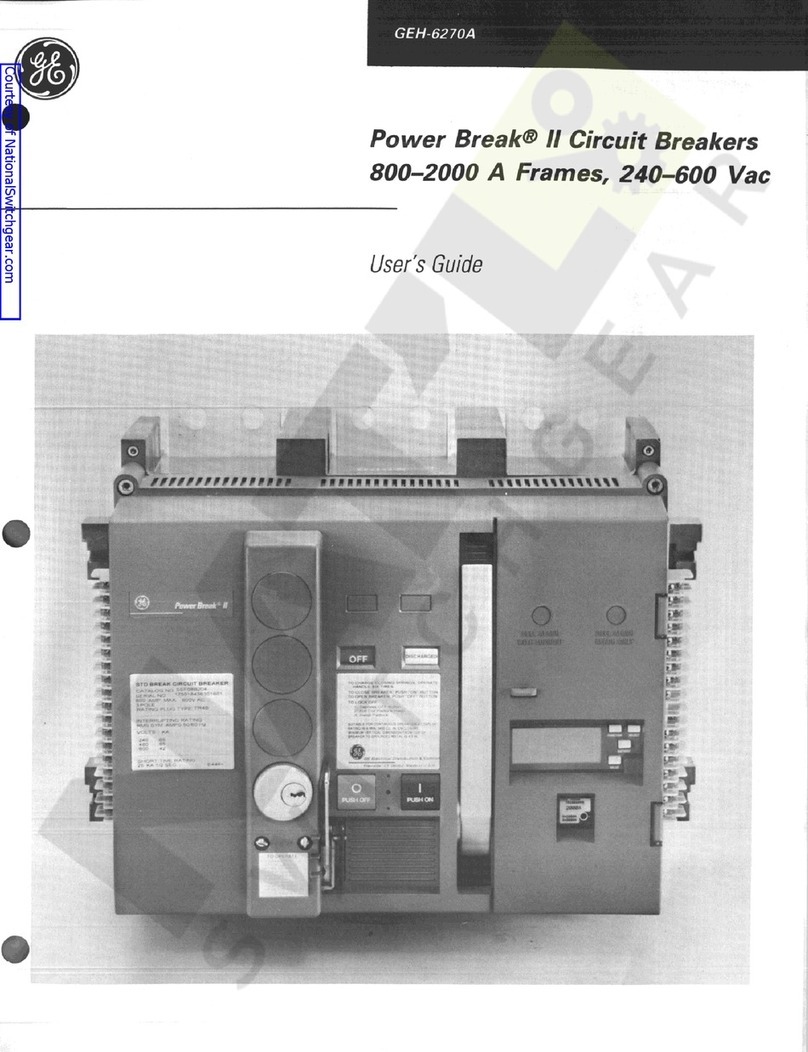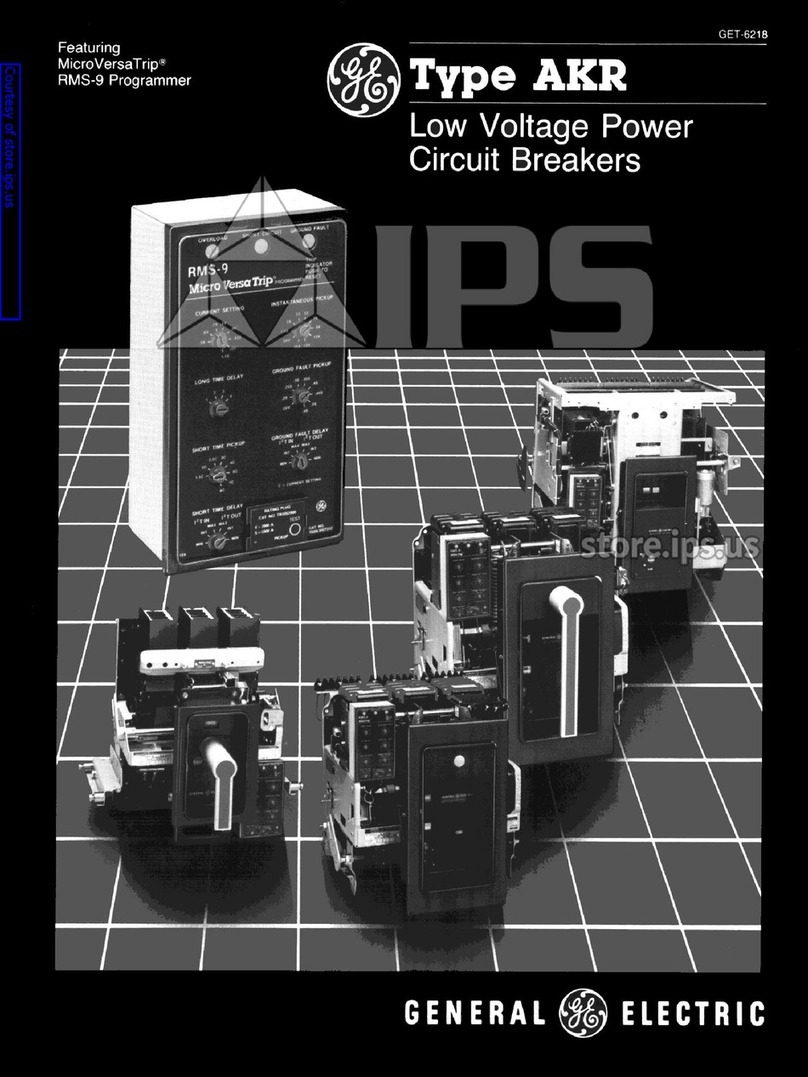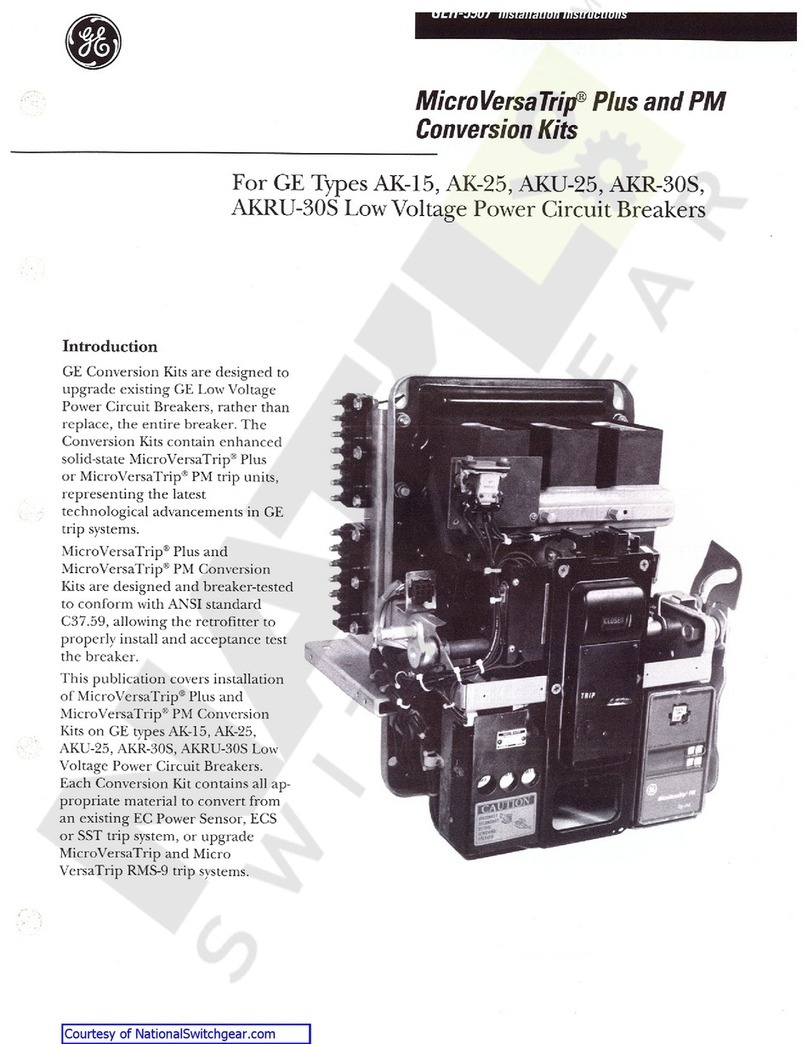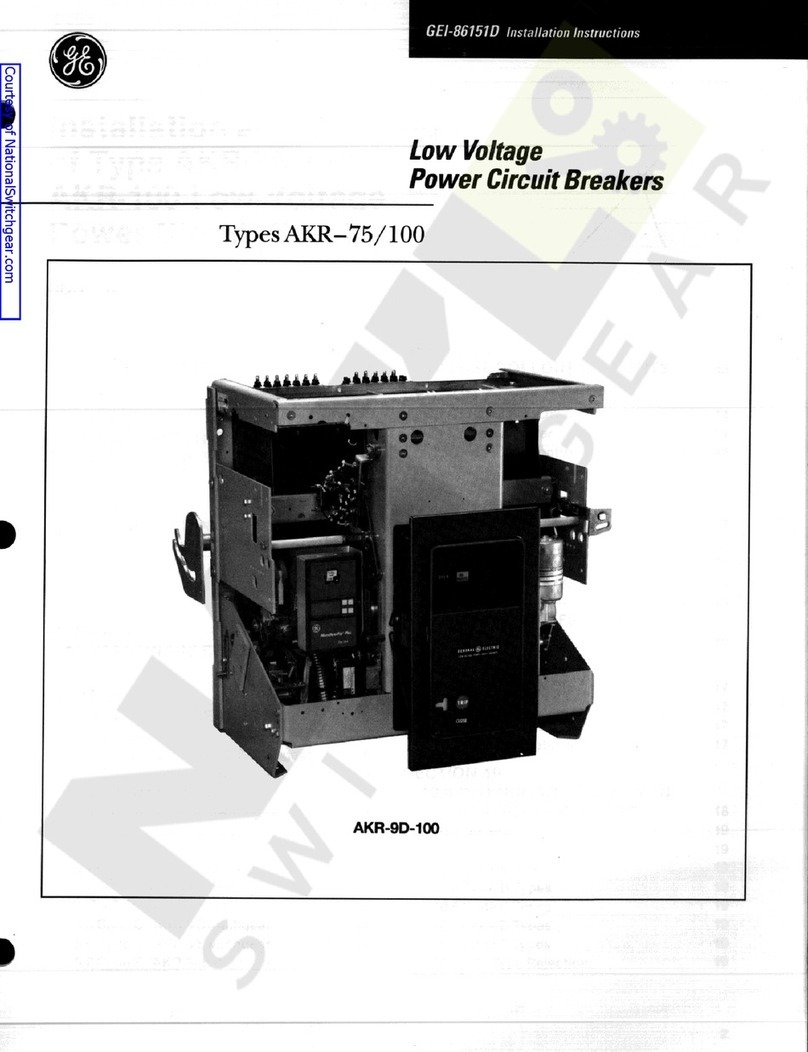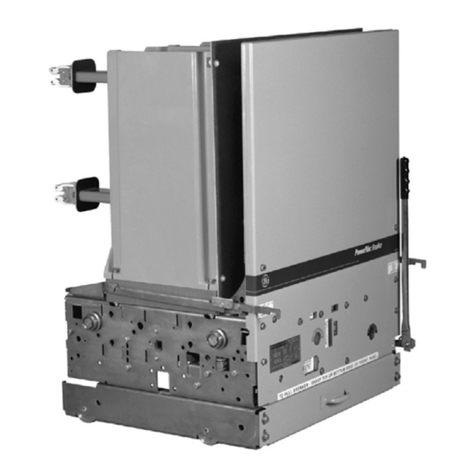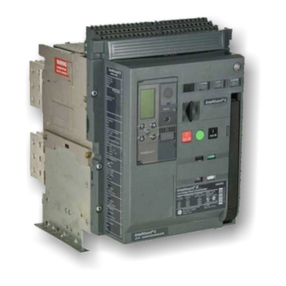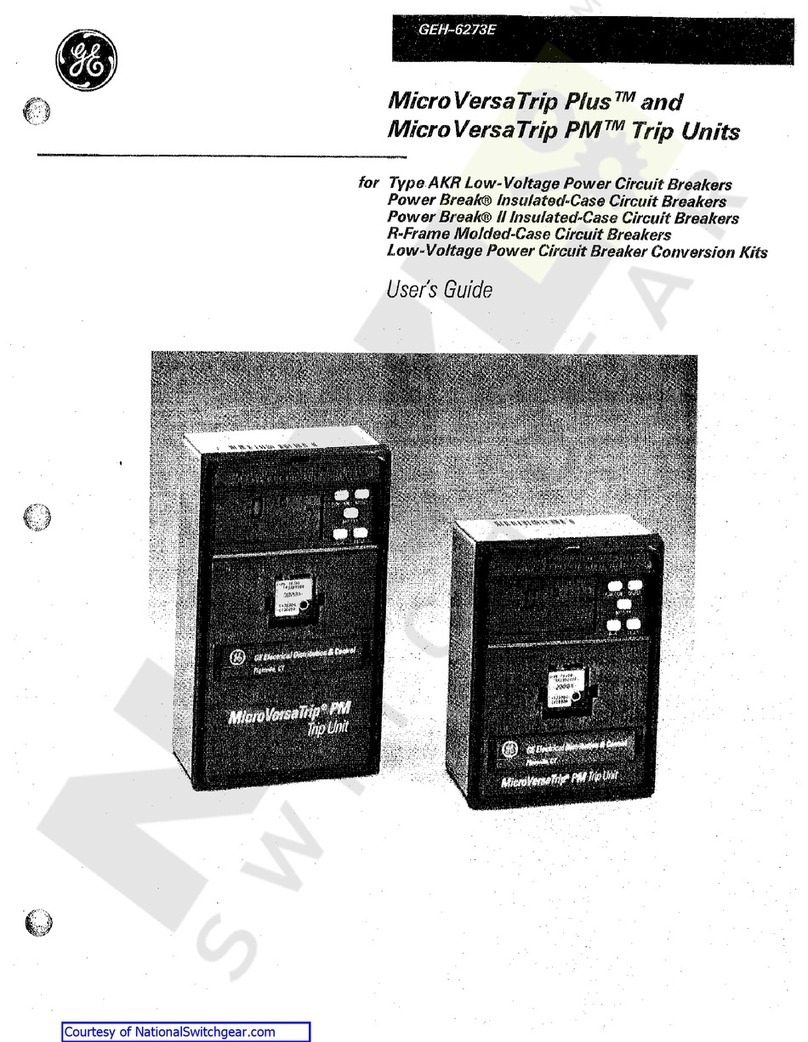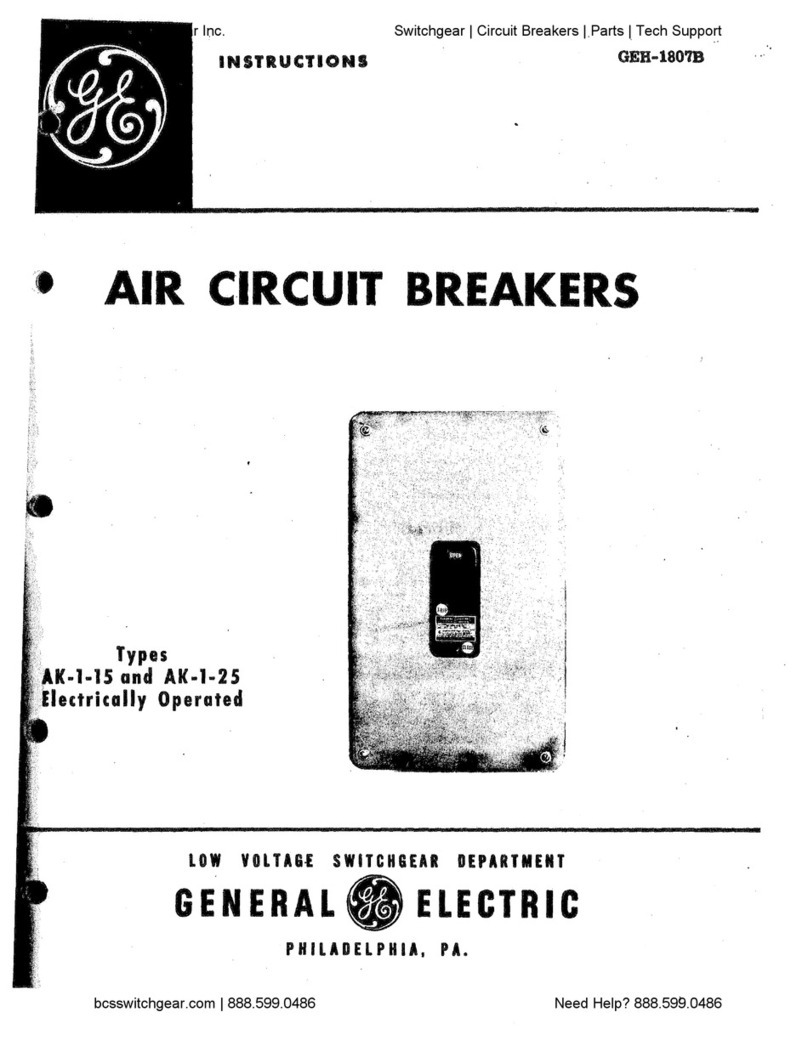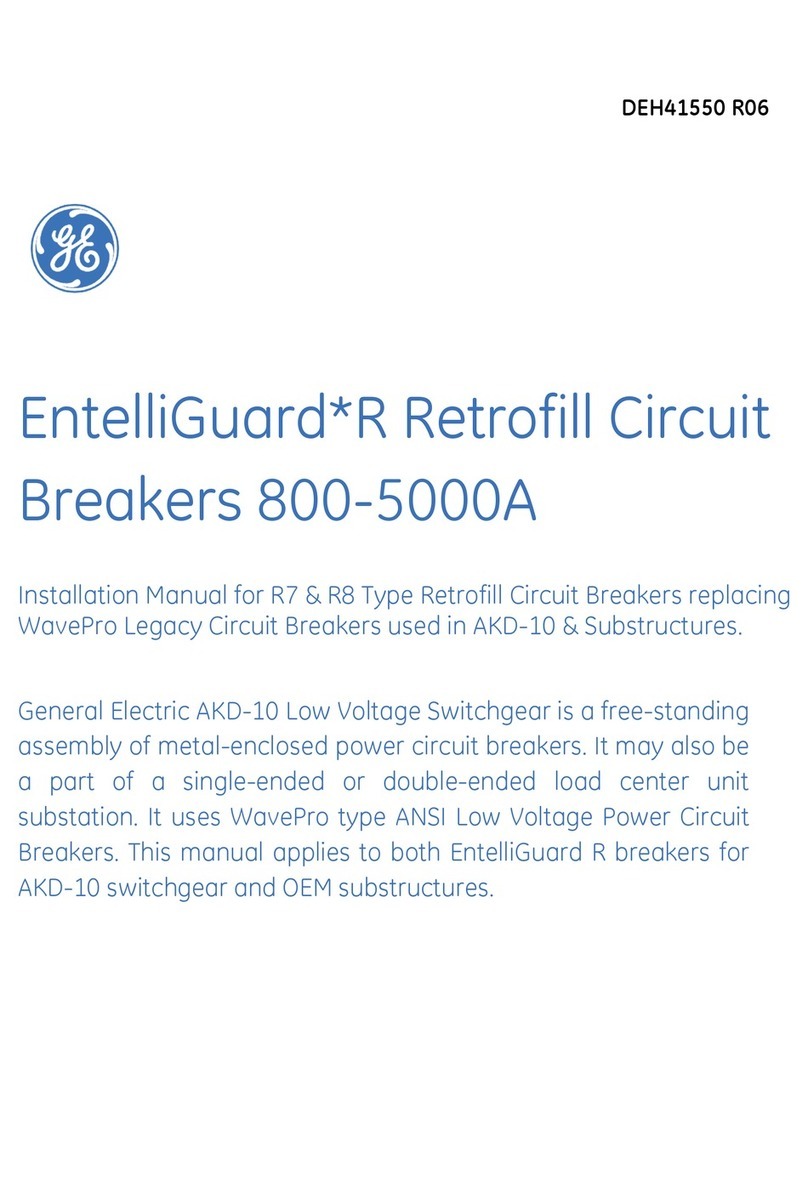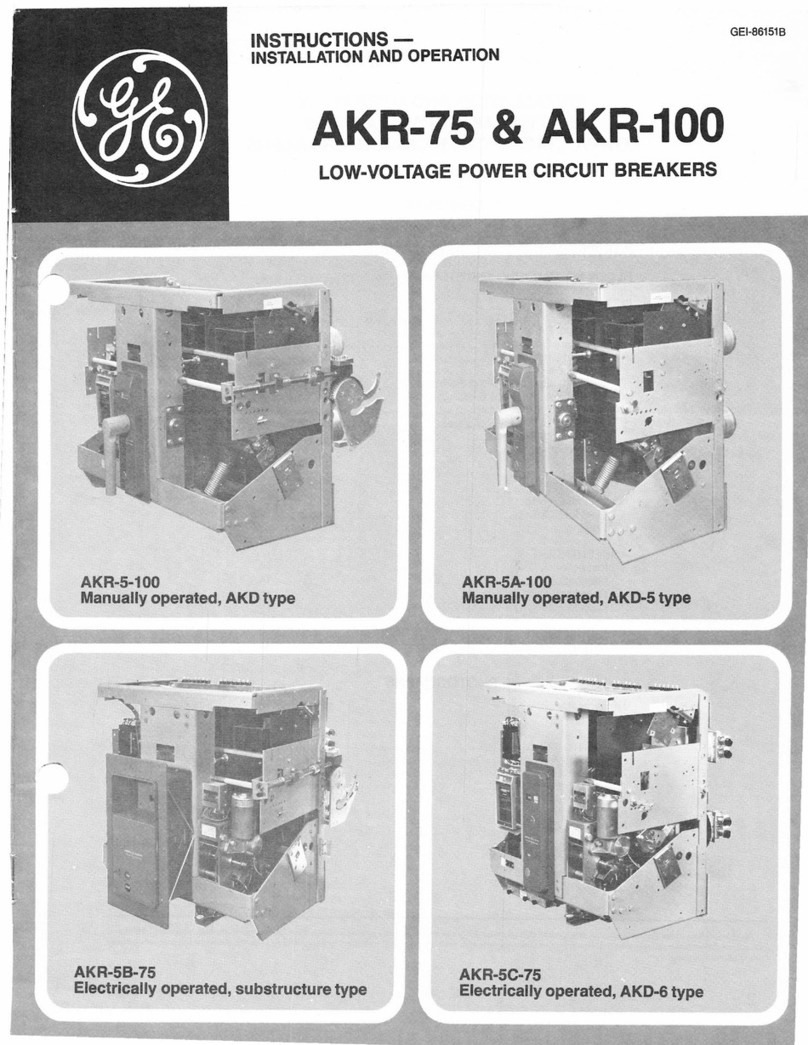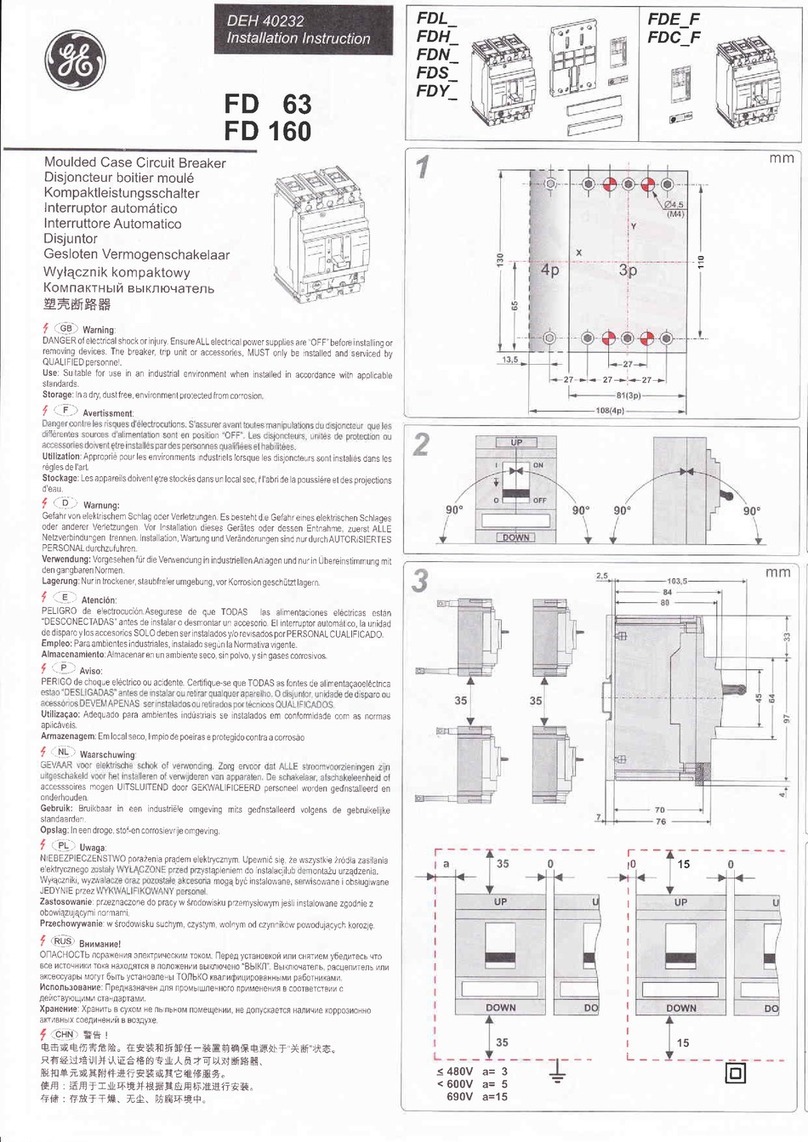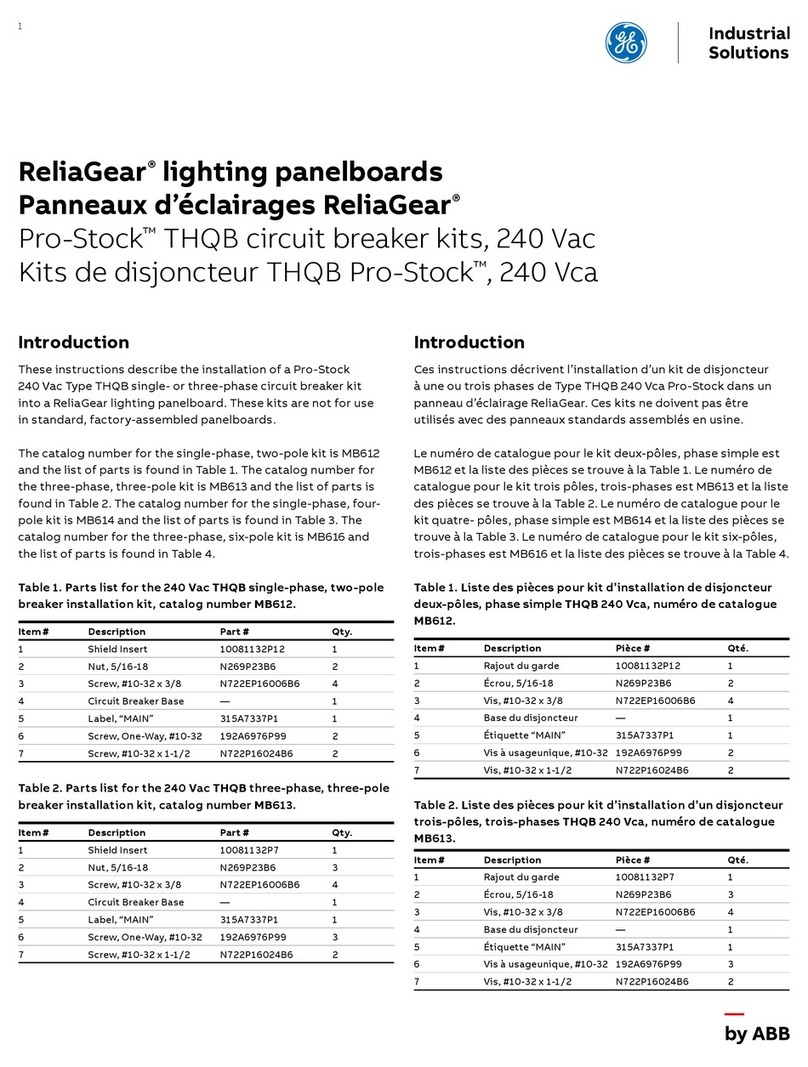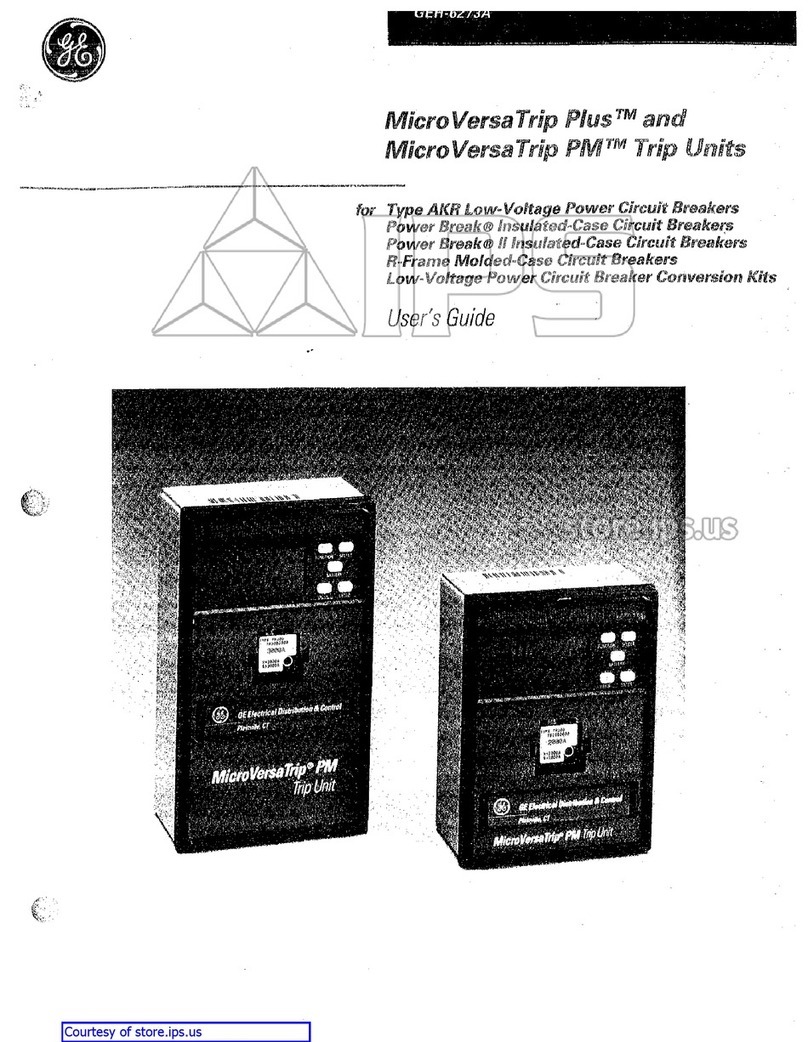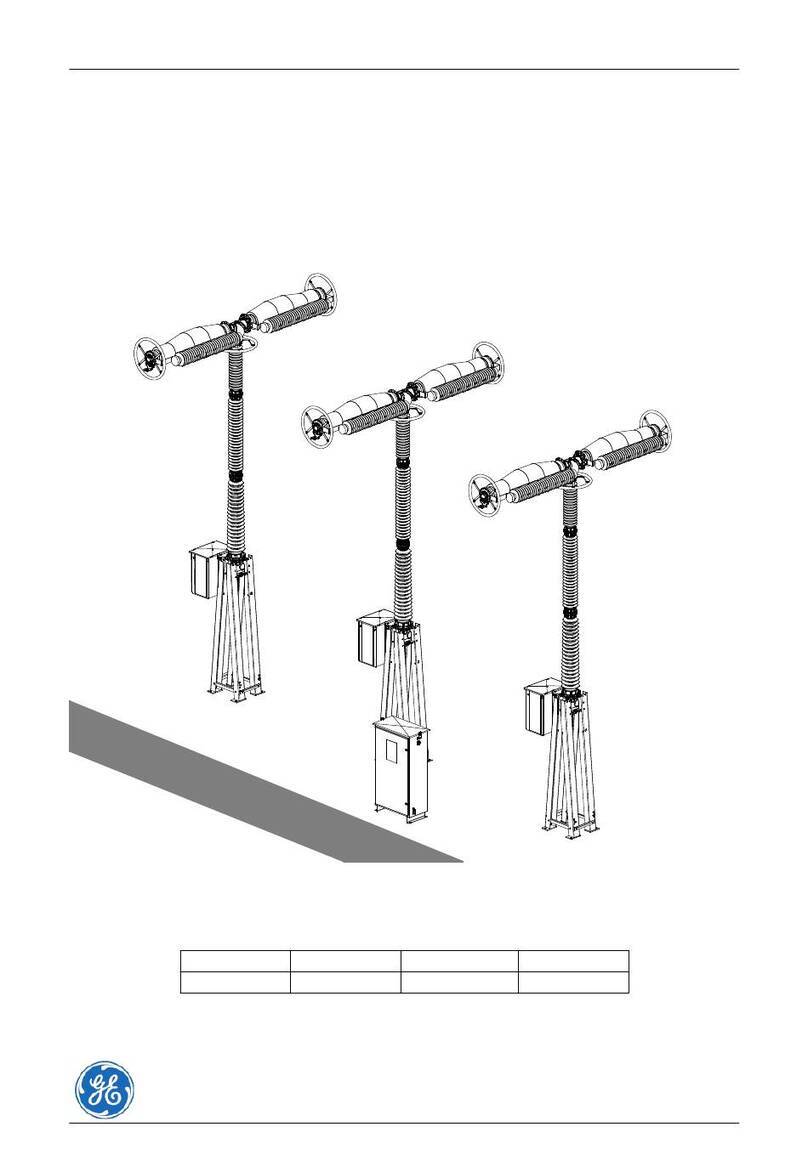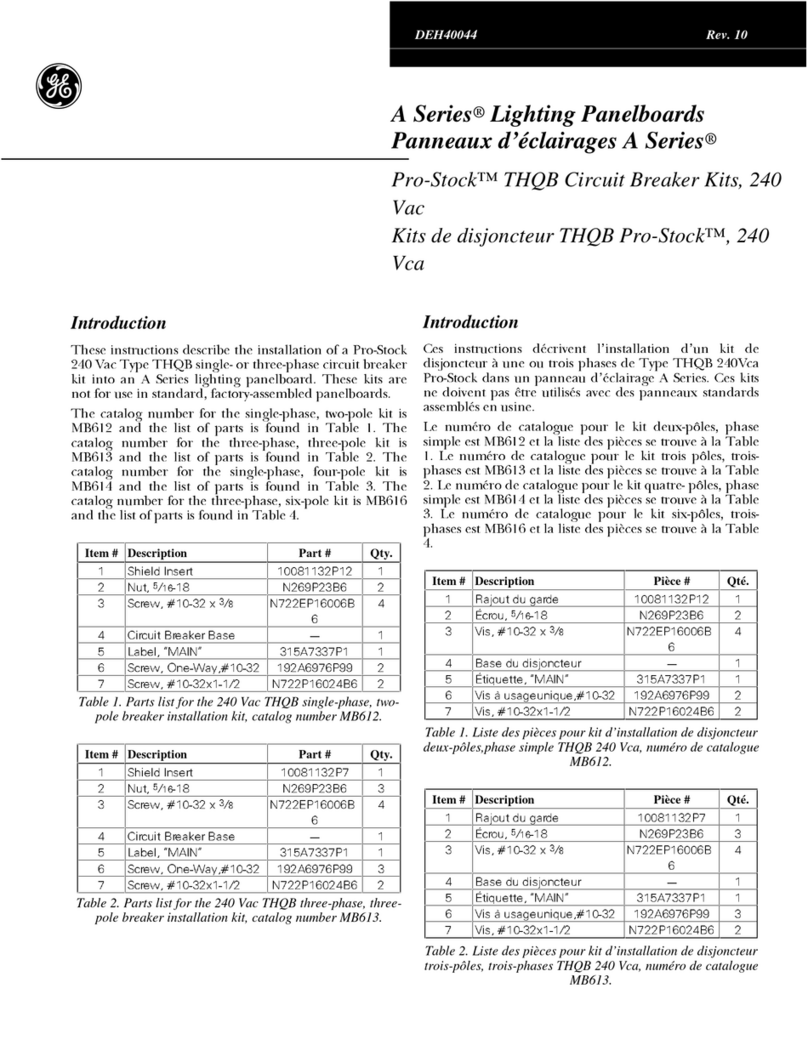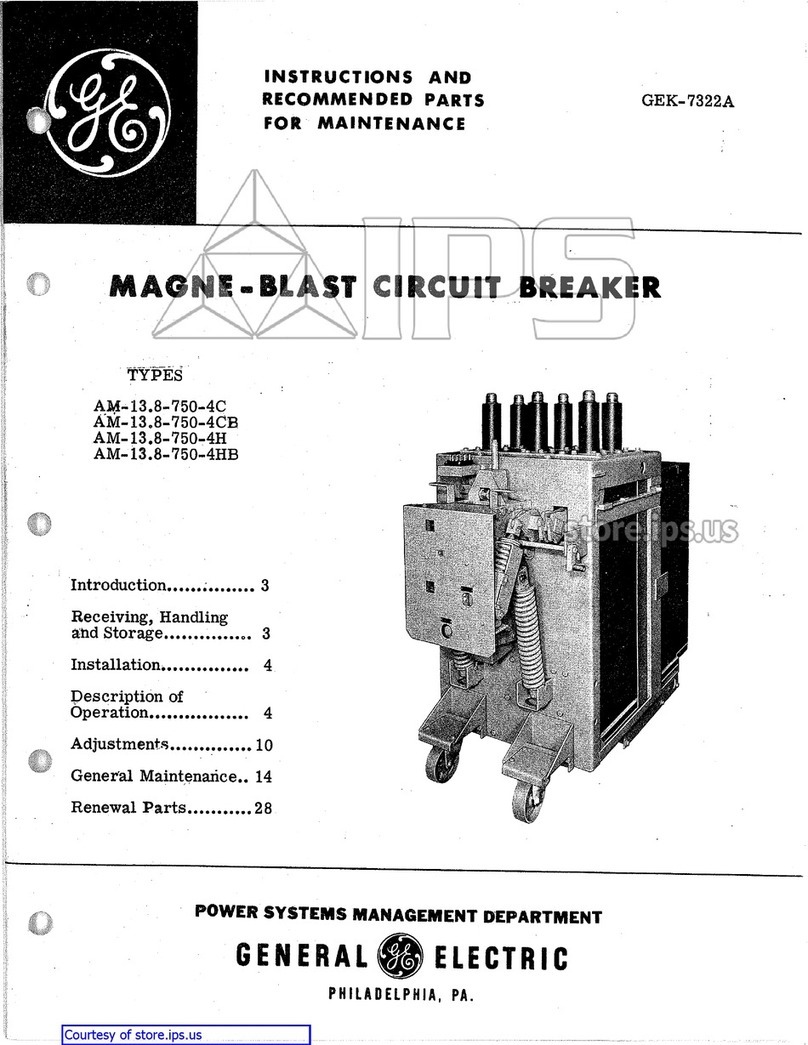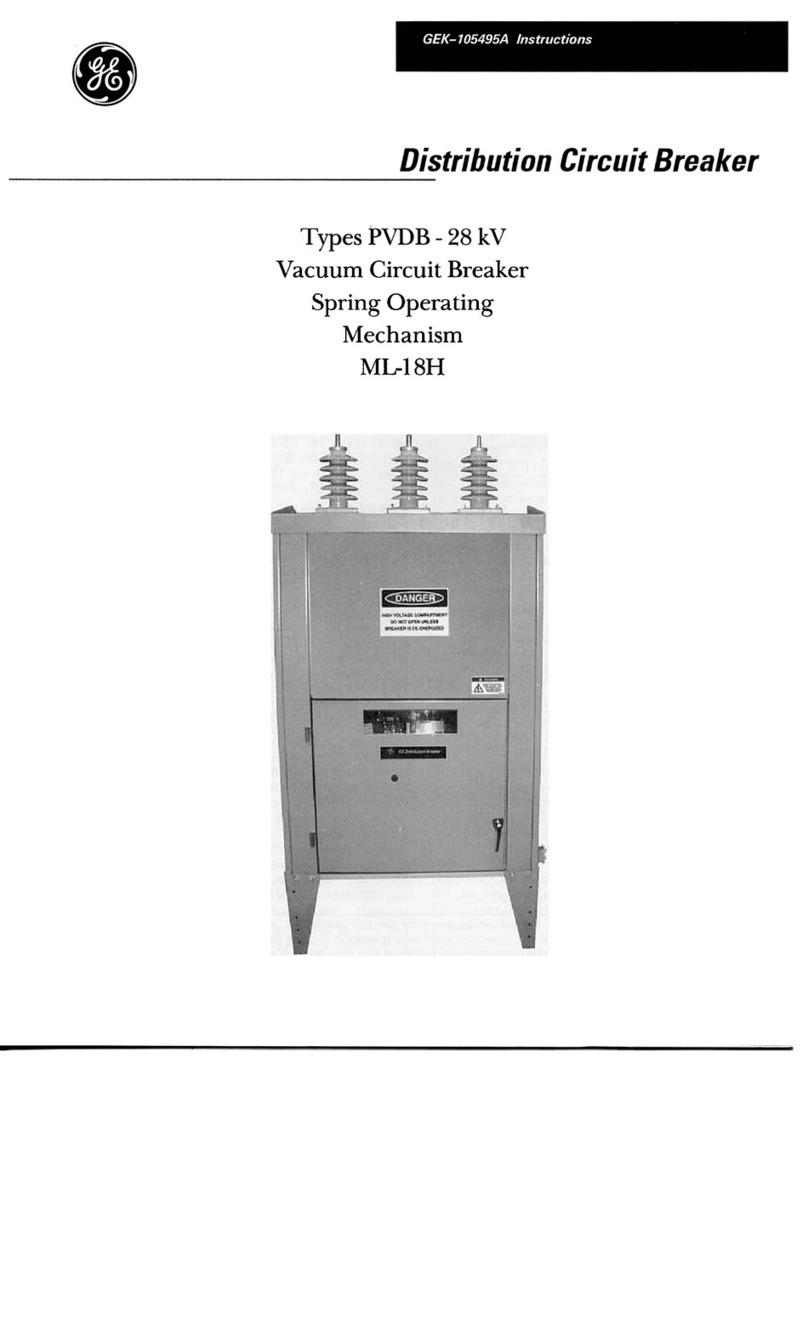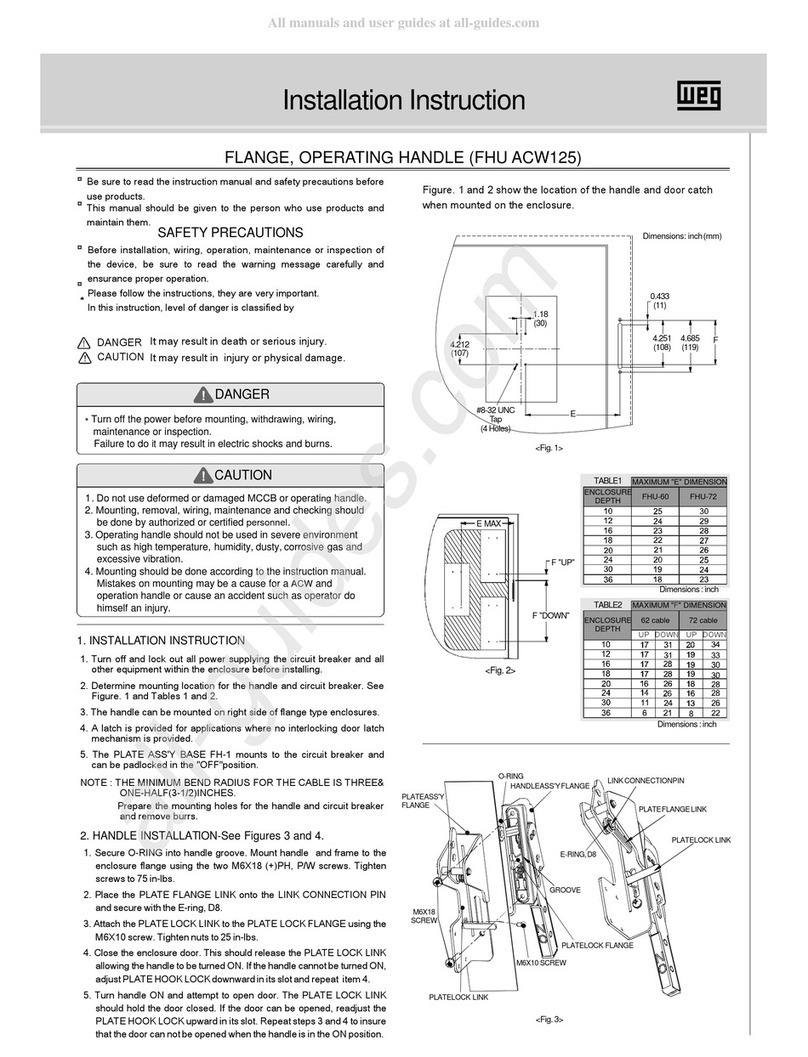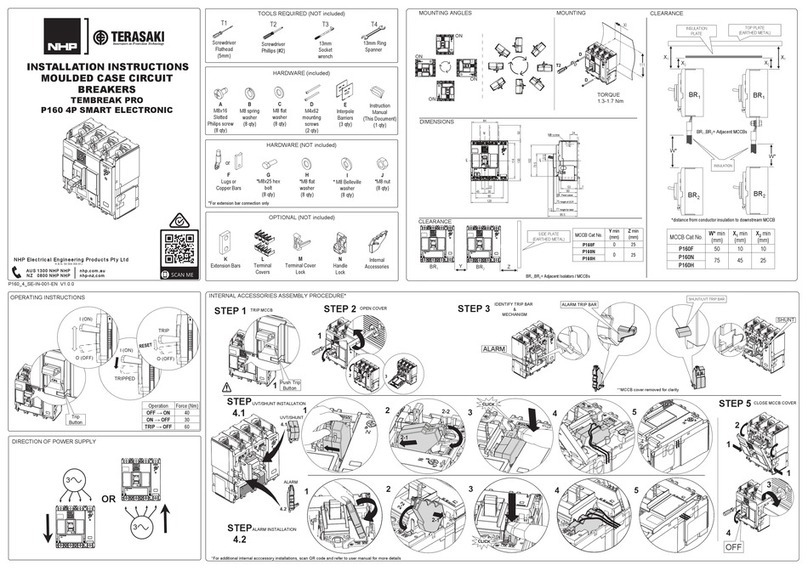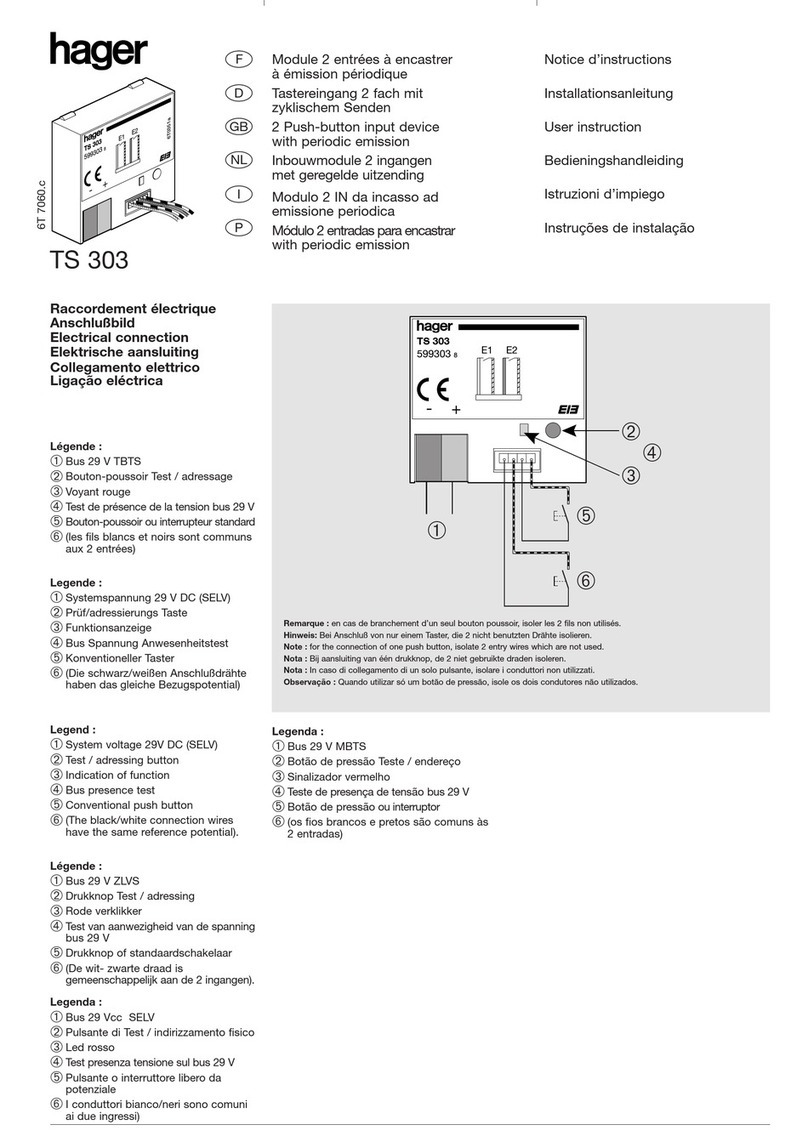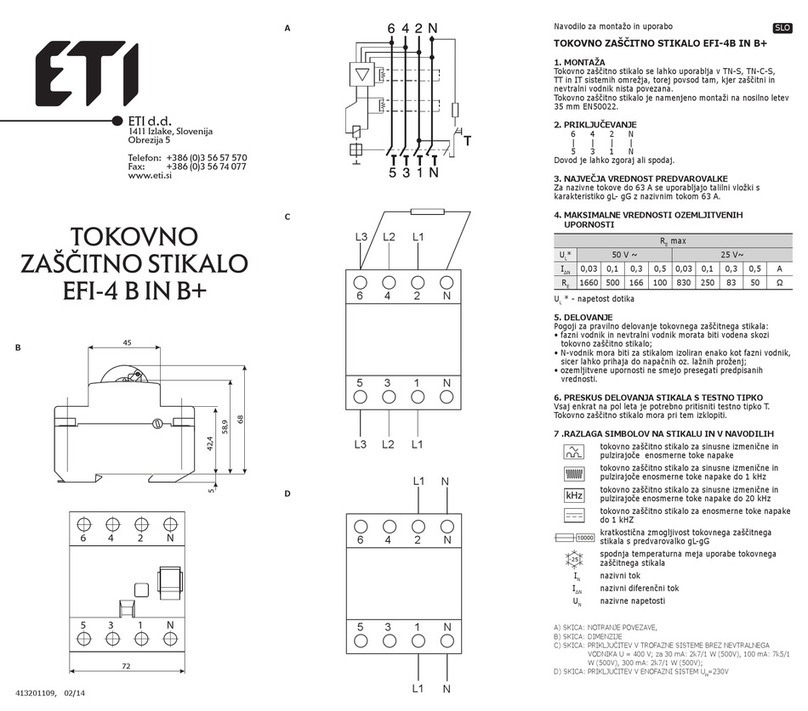
GEK-7302 Installation and operation of Type AK Power Circuit Breakers
L -- -___-- -~
,$e~~~~ing‘~~ay which extends out fromthe
\ enclosure to receive the breaker, Small
“+ breakers have guides on their side plates
which slide in channels in the enclosures.
Both large and small breakers have a test
..~ \1 ,’“:@,.
nrd+ rlrm~~mtt hriXake*s are fastened to a the breaker carriage. This 1s the safety cause the breaker to be trip free. Tighten
position stop where both the primar and
1 the 3/8 inch hex head screws inserted in the
secondary contacts are disengaged. gain front holes of the drawout tray during step
lift the position stop handle. Slide the 5 of this operation, The breaker is now in
breaker slightly forward to remove it from the operating position.
the enclosure. ‘__*_.
--. . .
w itnarawing Breaker AKi50, 75 %id”i%O
Inserting Breaker AK-50, 75 and 100 elease the
I_
position in which the I
are engaged, but the
are not. In this posi
Ln r\snrn+nA n,n”+rinQ
secondary disconnects
primary disconnects
tion, the breaker may
VG uprr a-L== zi&GCL1 IU dly without energizing
the load cable or bus.
IT ncn.TAn ‘--“-icant on the disconnect
the force required to
leerz me VredKC1.
1. Trip-:the breaker to r
positiverackihg interlock.
2. Lift the’ racking handle as
use uwn4 1 iuw I
terminals to reduce
ir I II._ LL_^_l_^..
II .-“_ __..D -.
b=fir+in(l. Breaker AK-15 and 25
1. Lift the breaker to a position ap-
proximately six inches above the height of
the compartment tray. far as it
2. Pull the drawout tray out under the
breaker as far as the tray will travel.
NOTE - When installing an individual
skeleton housing for a drawout AK-500r 75,
locate a bolt head over the two front bottom
mounting holes of the housing to provide a
limit stop for the drawout tray.
Q ‘I ,T.,,PV the, h,.~a~~,. ahnu+ l/2” abc,ve
,.\\ will go. ,,
ThiP‘operation w
interlock to
the remaind
Note that he
+A#-
ill re-engage the trip
hold the breaker trip-free for
ler of the racking operation.
re the cam is rotated by lifting
e handle, whereas in racking the breaker ‘-
in, tile operation is p
>‘- 1
erformer, as’s result
of pushing tl- ’Le nancue down. ‘.
_, _,
0, YYWbI -.I- u__I..__ ----_-
il.” An7.rnl
nine nn the +I-SV and
oush the 3. Reset the handle to ‘its lowered
ULG U”WLI pL”LY .,.. _..I I- _j ---
breaker back into its compartmeit so that position and lift it aa This operation
the rear bottom angle of the breaker is .formed 5at&es to completely
must be per
against the guides on the tray directly back disengage t he cams from their racking
of the dowel pins. pins, After the fi fth lifting stroke let the
4. Slowly lower the breaker onto the handle drop to its normal position.
tray and at the same time guide it so that
the holes in the rear angle of the breaker 4. Pull the breaker out of its com-
fit over the two dowel pins on the tray. If
?a
rfment until the test position stop engages
the
breaker is correctlv positioned 01
lthe co hold the breaker in the “test” posit,ion. ; ”
-._ -- .._~~
dowels, its rear and side bottom frame i’
angles will all *sit firmly on the tray. 5. Depress the test position stop han- ‘, >:+
5. Insert two 3/8 inch hex, head screws dle and pull the breaker out of its corn-
through the holes in the front of the side partment as far as the drawout ,tray will
~nalae
fin
the hrnaker
and thread them part travel.
1. Trip the breaker.
baker until the guides
2. Raise the bre
,,
,.‘,
on the sides of the breaker are level with
their mating supporting chant iels in the
enclosure, and slide the break er part way‘
into its enclosure. (Note - ‘I‘he breaker
will be obstructed by a positior I stop at the
bottom of the enclosr ure after the breaker __
has traveled only a E;hort distance into the
cubicle. Lift the Jposition stop handle,
located at the bottom right of the enclosure,
which will release *the position stop and
&+^..^I F....+Lnr intr. ikn
allow the breaker to navel 1111Lll=jl I_IIcv Lllr
““,, cubicle).
Y \ 3. Raise the rackout handle forward
and up as far as its travel will permit and
push the breaker into the enclosure until
irt.^ .,- nlrn.l+
mine am thn h~nrllcz aqsmnhlv
“Cdl asaruuc CLIb “““r”‘b , --__ “-_ _-___- __. ..-J ----- “~_- -rr---
the side of the enclosmg case. tighten screws fjrmly. This ‘prx
. - -. -A../ _-_^- _.
4. Push downward on the I . ’
. .
6. Remove the two 3/8 hex. head
screws which hold the breaker on the tray.
better alignment 01 me primary s~ailolldl Y
gamut nan- studs and the urimarv disconnects for the : ,‘,a .:.
j
a
S
-_.-..1 -_ .-_- --.- ..-
novement into the en- to prevent further tra;el. (Note f Refler to _
e operator to provide section describing “Test Position” in t
to make the primary instructions.) then pull the breake
ie stationary studs in
orming this operation, 7. Release the test position stop by primary contacts clea
itc:
lever and nush the breaker
..
:
wards as far as its free travel will permit back>
and then pull the racking handle down to,X,bc-t:,zar,,
be sure the trip interlock i-h --,^--^-1P\\
(Note - When the racking handle LL LIL rib
position other than completely down, tl
breaker cannot be c ..--- L-J ^^-I i^ L,.IA
,peraLeu a‘lu ID IICIU
trip-free by the trip interlock.- This ap-
olies to the “fullv in” and “test” positions.)
n+ rackme cam.
‘Y ----“I
le :“,“,,on the cam” which allows the racnk%E TEST POSITION
+r. kn liF+nri nnmrah in o,,nw thp nawl
. .
__-_--.
to engage the first notch on the cam.
,’ ‘_’
*eaker open. If the
. . . ,
8. When the paw1 engages the first
notch on the cam, push the handle down
again to its normal position. This causes’
the cam to rotate about.the racking pin.
Repeat this operation five times to rack the
hTr=csko?
into its *‘Final noeratin@
nosition.
‘i’he “Test Positio n”, as referred to in
the previous mstructn ,ns, is that breaker
position where the pri..a-., =-..--
ma7v ~OWPT
dincon-
-_-_ _.
nect contacts are safely disengaged but the
secondary control disconnects are engaged.
In this position, the breaker may be tested
or operated manually or electrically with- ’
out enereiv;“m
tho nrimarv
newer circuit.
se
1. Trip the br
*breaker is not open, the interlocK lever OX ,,* .,y.IA _..-- __I __._-_ _).
the drawout mechanism will not permit Interlocks hold the breaker trip” free until provided”;hYe”;l”aEi;inerhandit: hss been move6
to the completely down position, thus re-
operation of the rackout handle. it is racked into the fully contactedposition.
The fifth stroke of the handle is only a leasing the trip interlock.
up and for- partial stroke and does not result in any
further movement of the breaker. It does
disengaging serve three usefulpurposes: itpositions the Foramorecon‘ 1 I” *
y disconnects. cam so that it cannot rotate and allow the drawout me
AW3 DRAW
3. Slide the br eaker out until the breaker to back out under short circuit TI^.-”
stresses: the oartial stroke signals that the
2. Pull the racking handle
ward as far as it will travel,
the primar:
position stop engages in the front slot m
the bottom of the breaker carriage. The
breaker is now in the “test
where its primary disconnects
disconnected from tl
minals of the enclosure. (Nott
section describing “Test Positic
instructions.)
--- -----,
racking operation is complete; and it re-
Innroo +ko twin intnrlnrli which wr,=cnrncrpd
qlete aescrlprlon or
chanisms and enclosures see
OUT EQUIPMENT INSTRUC-
VIYS, GEH-1830andAKD5DrawoutEquip-
ment Instructions GEI-90890.
” position,
ITLIYG.3 CIlr CA .p LILLIA *“-.. ,...-%... 1.11 -“.D-D--
are safely by the racking pin during the previous four
pumps of the racking arm, NOTE: Once a DRAWOUT BREAKERS AKD5 EQUIPMENT
le line and load ter- . . ..a. . .
? - Refer to racking operation has been started, it must NOTE: AKD
)n” in these be completed as the breaker cannot be
rn.rnrn~A nn+il the ezickinn oDeration is
letter “A” ap
.
4. To remove the breaker from its
enclosure, lift the position stop handle and
slide the breaker forward until the position
stop engages the rear slot in the bottom of
9. After completing the fifth racking
stroke, lift the handle as high as it will go
and allow it to drop to its normal position.
NOTE: Any strokes beyond this point will
5 breakers are identlfleo Oy $ :\~
lpearingafter breaker number - *’
example, “AK-2A-15”. ,\ \.,; “V
Drawout Mechanism Operation - There are
four positions of the drawout mechanism:
”
